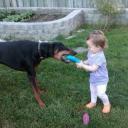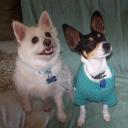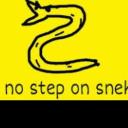Yahoo Answers is shutting down on May 4th, 2021 (Eastern Time) and beginning April 20th, 2021 (Eastern Time) the Yahoo Answers website will be in read-only mode. There will be no changes to other Yahoo properties or services, or your Yahoo account. You can find more information about the Yahoo Answers shutdown and how to download your data on this help page.
Trending News
DS: Corrections and the 5 W's?
Who, what, where, when and why...
There always seems to be a little debate surrounding corrections. Especially whether or not people use them at all in their training (I use them). Lately there has been discussion as to when people implement them and how far they go. So let's share...
Who uses them here in their training?
What is your method of implementing a "correction"?
Where do you use them? Only in training, maybe at home, on a walk, etc. or maybe all of the above.
When do you implement them? - I'm talking timing, specific behaviours, etc.
Why do you use corrections in your training or why not?
And in the spirit of English class lol...
How do you follow through after a correction? Meaning, how do you let your dog know it has accomplished what you are asking after the correction?
OR
If you don't use corrections, how do you teach your dog the difference between appropriate and inappropriate behaviours?
Chigirl - all our stalkers have been out to play lately lol
16 Answers
- Anonymous1 decade agoFavorite Answer
With my greyhounds, any kind of corrections were very rare. They were very well leash trained and they were, after all, "retired". All they ever got were an occasional pop of the leash. That's all the needed.
My Belgians are competition obedience and rally dogs. So, they're different.
When I'm teaching something new, there are no corrections. When a dog doesn't yet know what you want, they can't make a mistake, so they only get shown what I want.
Once they know the behaviour, the correction depends on what we're working on. If its an error while heeling, they get a pop of the collar. If a dog moves during a sit/down stay, they get put back and a verbal correction (they know when I'm not happy), if they miss something, they go back and re-do.
Follow through would be instant praise. If, for example, I lost my dog's attention while heeling, he'd get the collar pop, then praise instantly when I had his attention back because he's then doing it right. I use a lot of praise, my dogs are never in any doubt when I'm happy with them, sometimes treats after the praise, and corrections when needed.
Source(s): C - ms mannersLv 71 decade ago
Who uses them here in their training?
What is your method of implementing a "correction"?
The correction I use depends on the dog. My Westie is the "good girl" - I hardly ever have to correct her, and when I do, a verbal correction is enough. With my Lab mix, I am currently using an E collar, and that is the first correction I have ever seen him respect when he is distracted. My other dogs fall in the spectrum between these two. My deadly index finger is greatly feared among the pack. :o)
Sometimes I will allow a natural consequence to be a correction, like hitting the end of the leash because I turned and the dog wasnt paying attention, or being left behind because the dog refused to come and be leashed.
***
Where do you use them? Only in training, maybe at home, on a walk, etc. or maybe all of the above.
When do you implement them? - I'm talking timing, specific behaviours, etc.
In life. :o)
If a dog deliberately disobeys a command he understands, or does something unacceptable (like jumping up on people). I start with a verbal correction, and take it up from there until the dog responds.
***
Why do you use corrections in your training or why not?
Because it is similar to the way dogs relate to each other, and is instinctively understood, even by dogs that dont know me. Dogs dont give treats, or tell each other "good boy".
******
And in the spirit of English class lol...
How do you follow through after a correction? Meaning, how do you let your dog know it has accomplished what you are asking after the correction?
A correction means "here is the line...dont cross it". A correction addresses undesirable behavior, and no correction means they are on the right side of the line. If you correct properly the dog gets the message, quickly learns where the line is, and there is no long term emotional scarring. :o).
I dont give rewards for NOT doing something the dog knows he should not do...I expect that. I do give rewards for desirable behavior, when a dog does something I ask him to do.
Source(s): lots o dogs - Anonymous7 years ago
Go here for the best dog training couse http://dog-training-course.checkhere.info/
Since it is obvious that you do not have a clue about obedience training, your services should be for free. You cannot train even an adult dog for 8 hours a day. About the most that can be done at any one time is 10 - 20 minutes and that is with an adult dog and not a puppy. The attention span on this baby is extremely short and training session should be no more than 10 minutes and twice a day. Additionally, there isn't going to be much learned if you will only be training for 5 days. Obedience training is cumulative and is done over a much longer period of at least several weeks to several months.
What you can charge is determined by your experience, reputation, and accomplishments and in a case like this, should also include guaranteed expectations. Just working with dogs over several years, is not the experience that is necessary to be a dog trainer. There are too many people who are putting that title to their name and fleecing the public. Don't be one of them.
- Anonymous1 decade ago
Who uses them here in their training? I do!
What is your method of implementing a "correction"? A leash pop and verbal correction
Where do you use them? Only in training, maybe at home, on a walk, etc. or maybe all of the above. Everywhere
When do you implement them? - I'm talking timing, specific behaviours, etc. The split second he does something I don't want.
Why do you use corrections in your training or why not? I use them because it gives me a well balanced dog, and teaches him what I expect from him.
And in the spirit of English class lol...
How do you follow through after a correction? Meaning, how do you let your dog know it has accomplished what you are asking after the correction? I give him lavish praise when he does what I've been expecting him to do. I never use treats.
OR
If you don't use corrections, how do you teach your dog the difference between appropriate and inappropriate behaviours?
- How do you think about the answers? You can sign in to vote the answer.
- LorraineLv 71 decade ago
Enjoyed reading all of that - thanks.
Most of my corrections would be vocal, around the house and out on a walk and often when on lead as well. When on a walk I do try to give them free time where as long as they do not go too far then I try to stay pretty relaxed and only work recalls or whatever on younger dogs who I am just putting to the test.
I also try and preempt behavior and issue a verbal correction before it happens. I would say this happens quite a lot. I'm certainly not going to wait until they have done whatever and then ignore it.
When actually training (obedience wise) then I will just repeat the action until it is correct and then give praise so that the dog knows this was the correct action. These are the main times I would consider myself ignoring bad behavior, as it is not actually behavior as such if they don't have their sit quite square or their present is not quite close enough or whatever.
Can't imagine living without corrections as such.
- JaneLv 41 decade ago
There are two different types of corrections(punishments) in operant conditioning for dog training, + & - . I use +P as least as possible and -P when necessary. I don't want to bore people with how I train my dog since many people have already written novels here. :P I'll just state that I use predominately marker training/+R, however I know it is not currently popular here on YA. I'm not here to change your training minds. From my observation, almost all professional dog training places in this day and age uses +R with -P. In home training however is a different story. Almost all average dog owners I know and see on walks or pet stores use +P & -R.
- 1 decade ago
I believe that positive reinforcement is generally a better approach to dog training, but there are times when I still use corrections.
What method i use would depend on the behaviour im trying to discourage, it my a verbal, or a physical correction like a tug on the lead, or moving the dog to a different room.
I view training as a 24 hour 7 day a week thing.
I believe that you have to correct a dog as soon as you see the behaviour, and while they are still doing it. if you allow the dog to continue with the behaviour and and then try to correct it five minutes later you will just confuse the dog. you also have to combine a correction with a reward for the right behaviour. i try to follow what i call the "1 second rule" that is you have one second to correct a behaviour and one second to reward.
- DeeDawgLv 61 decade ago
I use corrections.
I only use them for refusal of known commands, failure to properly perform a known command, or completely inappropriate behavior.
I use corrections wherever they are needed. Whether we're working, training, going for a walk, at home, anywhere. They're not location-specific.
Most of my corrections are more body than verbal or physical, but that's just routine communication, so i'll leave that out for now.
I administer correction the second i see inappropriate behavior, or within 2 seconds or so (a reasonable amount of time) when the dog does not comply with a command. the infraction depends on the correction. for a command performed poorly, i say UH UH and have them repeat it. for a command refused, i issue a collar correction. for inappropriate behavior, the correction fits the behavior- for example- the dog looks like he's about to eat something off the ground- i use a verbal correction first, and follow with a collar correction if the dog doesn't immediately comply. for inappropriate pack behavior, the correction can range from a verbal correction to hauling the dog off his feet and giving him a shakedown- it all really depends on what's going on, and how much i DON'T want to see the behavior repeated.
Why do i use corrections? Proofing. because if i didn't, i'd only have the dog halfway there. he'd know WHAT to do, and WHY he should do it, but he wouldn't have a reason not to refuse!
After a correction, i praise immediately when the dog is doing what i want to see. example- i told the dog UH UH to wanting to eat something off the ground. he stops and looks at me. i praise, possibly reward, depending on how great the thing on the ground was that he left alone in favor to pay attention to me. i do use rewards, generally just when training a new behavior (no corrections then) but if a dog gives up something of value (food, chasing an animal, etc) to listen to me, then i reward him with play or food reward.
- JaxxieKatLv 71 decade ago
<<<Who uses them here in their training?>>>
I implement corrections in my training. It's vital with three giant breed dogs, two of which are 7mo puppies.
<<<What is your method of implementing a "correction"?>>>
It depends. I keep a magazine rolled up and held with rubber bands. I never use it on the dogs, but if, say, two of them get to playing rough in the house I smack a hard surface with the "stick" and firmly say, "enough!" Daisy, my 7mo Dane female, is terrible about jumping. The breeder thought it was cute to teach her to do this. A lot of Dane owners think it's funny to teach them to do this; however, having a small child in the house this is not a "trick" I want her to think is funny or acceptable. She'll likely top out around 120lbs, and that's a lot of dog coming at your shoulders. Another thing is that my sister is expecting her first child, so obviously an 80lb puppy jumping up to greet her when she comes over is unacceptable.
The correction in this case, if I'm the one being jumped on, is Daisy gets my knee in her chest. Not hard, like some sort of Karate maneuver, but enough to not allow her to get any sort of footing on my body. I firmly say, "down!" If she does it to someone else I grab her by her collar and make her lay down.
<<<Where do you use them? Only in training, maybe at home, on a walk, etc. or maybe all of the above.>>>
Anywhere, really. Fortunately they are very good on the leash, so corrections are mostly used at home.
<<<When do you implement them? - I'm talking timing, specific behaviours, etc.>>>
Immediately at the time the poor behavior is displayed.
<<<Why do you use corrections in your training or why not?>>>
Because with my dogs, it's vital. They're simply too big, and too strong, to allow any sort of poor behavior go unchecked.
<<<How do you follow through after a correction? Meaning, how do you let your dog know it has accomplished what you are asking after the correction?>>>
They get praise when they display the appropriate behavior. For example, if Daisy goes to chase one of the cats and I grab her collar, make her lay down and sharply say, "leave it!" and she obeys, I tell her how good she is and reinforce it by saying something like, "good leave it!" That way she associates the command with the praise.
- Rotten RottsLv 71 decade ago
Good morning Aphrodite and all!
Who uses them here in their training?
Of course I use corrections
What is your method of implementing a "correction"?
At the moment a dog does not react to the command given, of course this would be a command already known to my dogs. If it is a new command the dog would be put in to position, then praised.
Where do you use them? Only in training, maybe at home, on a walk, etc. or maybe all of the above.
Corrections are used in all situations, if the dog barks without cause said dog will be corrected ta ht instant.
When do you implement them? - I'm talking timing, specific behaviours, etc.
If the correction is not done immediately it is useless.
Why do you use corrections in your training or why not?
Not everything can be achieved with cookies and saying good dog







